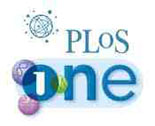 This study evaluated the effects of preventive treatment with low-level laser therapy (LLLT) on the progression of dystrophy in mdx mice. Ten animals were randomly divided into 2 experimental groups treated with superpulsed LLLT (904 nm, 15 mW, 700 Hz, 1 J) or placebo-LLLT at one point overlying the tibialis anterior muscle (bilaterally) 5 times per week for 14 weeks (from 6th to 20th week of age). Morphological changes, creatine kinase (CK) activity and mRNA gene expression were assessed in animals at 20 weeks of age. Animals treated with LLLT showed very few morphological changes in skeletal muscle, with less atrophy and fibrosis than animals treated with placebo-LLLT. CK was significantly lower (p = 0.0203) in animals treated with LLLT (864.70 U.l-1, SEM 226.10) than placebo (1708.00 U.l-1, SEM 184.60). mRNA gene expression of inflammatory markers was significantly decreased by treatment with LLLT (p<0.05): TNF-α (placebo-control = 0.51 µg/µl [SEM 0.12], – LLLT = 0.048 µg/µl [SEM 0.01]), IL-1β (placebo-control = 2.292 µg/µl [SEM 0.74], – LLLT = 0.12 µg/µl [SEM 0.03]), IL-6 (placebo-control = 3.946 µg/µl [SEM 0.98], – LLLT = 0.854 µg/µl [SEM 0.33]), IL-10 (placebo-control = 1.116 µg/µl [SEM 0.22], – LLLT = 0.352 µg/µl [SEM 0.15]), and COX-2 (placebo-control = 4.984 µg/µl [SEM 1.18], LLLT = 1.470 µg/µl [SEM 0.73]). Irradiation of superpulsed LLLT on successive days five times per week for 14 weeks decreased morphological changes, skeletal muscle damage and inflammation in mdx mice. This indicates that LLLT has the potential to decrease progression of Duchenne muscular dystrophy.
This study evaluated the effects of preventive treatment with low-level laser therapy (LLLT) on the progression of dystrophy in mdx mice. Ten animals were randomly divided into 2 experimental groups treated with superpulsed LLLT (904 nm, 15 mW, 700 Hz, 1 J) or placebo-LLLT at one point overlying the tibialis anterior muscle (bilaterally) 5 times per week for 14 weeks (from 6th to 20th week of age). Morphological changes, creatine kinase (CK) activity and mRNA gene expression were assessed in animals at 20 weeks of age. Animals treated with LLLT showed very few morphological changes in skeletal muscle, with less atrophy and fibrosis than animals treated with placebo-LLLT. CK was significantly lower (p = 0.0203) in animals treated with LLLT (864.70 U.l-1, SEM 226.10) than placebo (1708.00 U.l-1, SEM 184.60). mRNA gene expression of inflammatory markers was significantly decreased by treatment with LLLT (p<0.05): TNF-α (placebo-control = 0.51 µg/µl [SEM 0.12], – LLLT = 0.048 µg/µl [SEM 0.01]), IL-1β (placebo-control = 2.292 µg/µl [SEM 0.74], – LLLT = 0.12 µg/µl [SEM 0.03]), IL-6 (placebo-control = 3.946 µg/µl [SEM 0.98], – LLLT = 0.854 µg/µl [SEM 0.33]), IL-10 (placebo-control = 1.116 µg/µl [SEM 0.22], – LLLT = 0.352 µg/µl [SEM 0.15]), and COX-2 (placebo-control = 4.984 µg/µl [SEM 1.18], LLLT = 1.470 µg/µl [SEM 0.73]). Irradiation of superpulsed LLLT on successive days five times per week for 14 weeks decreased morphological changes, skeletal muscle damage and inflammation in mdx mice. This indicates that LLLT has the potential to decrease progression of Duchenne muscular dystrophy.
